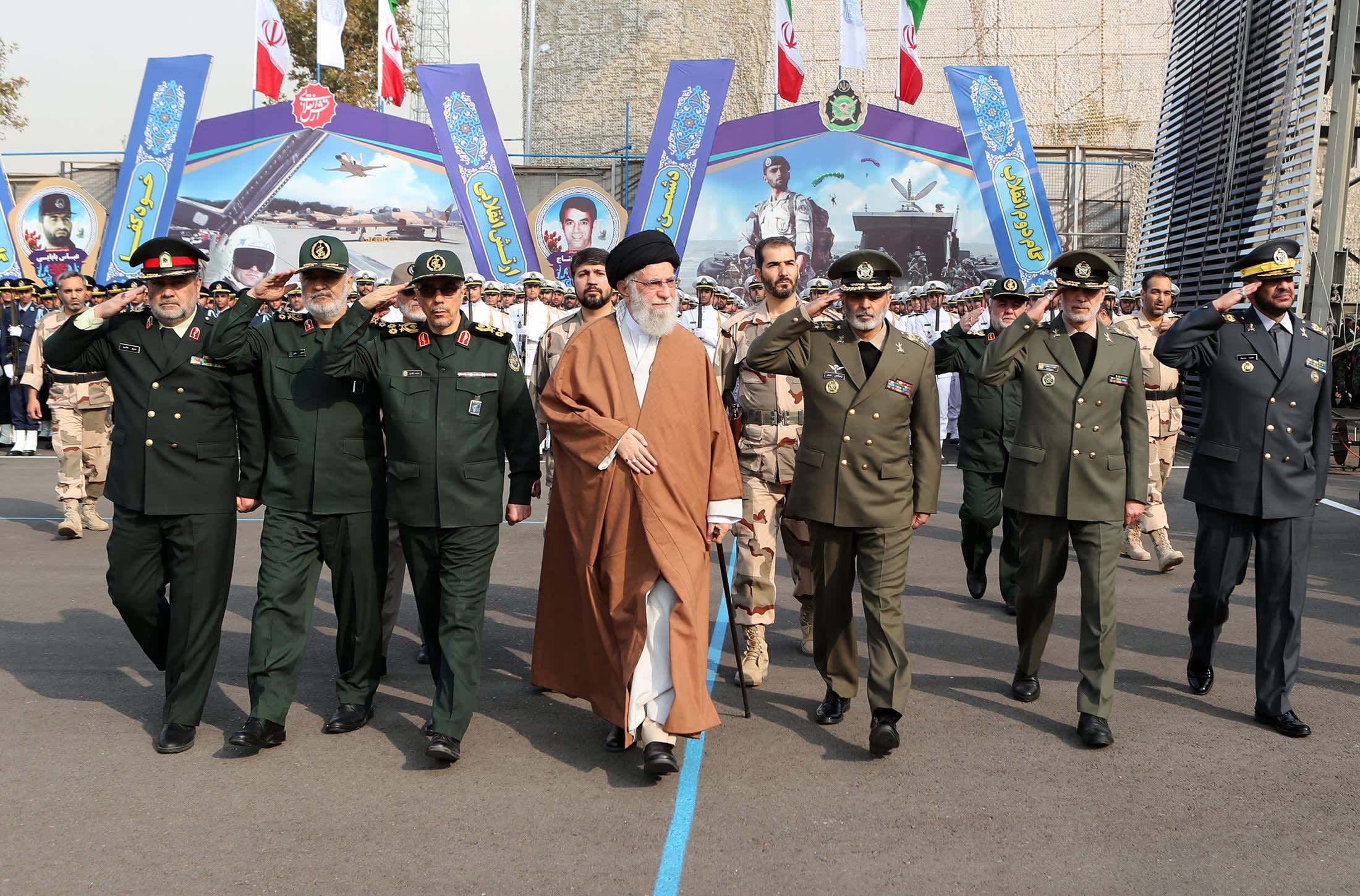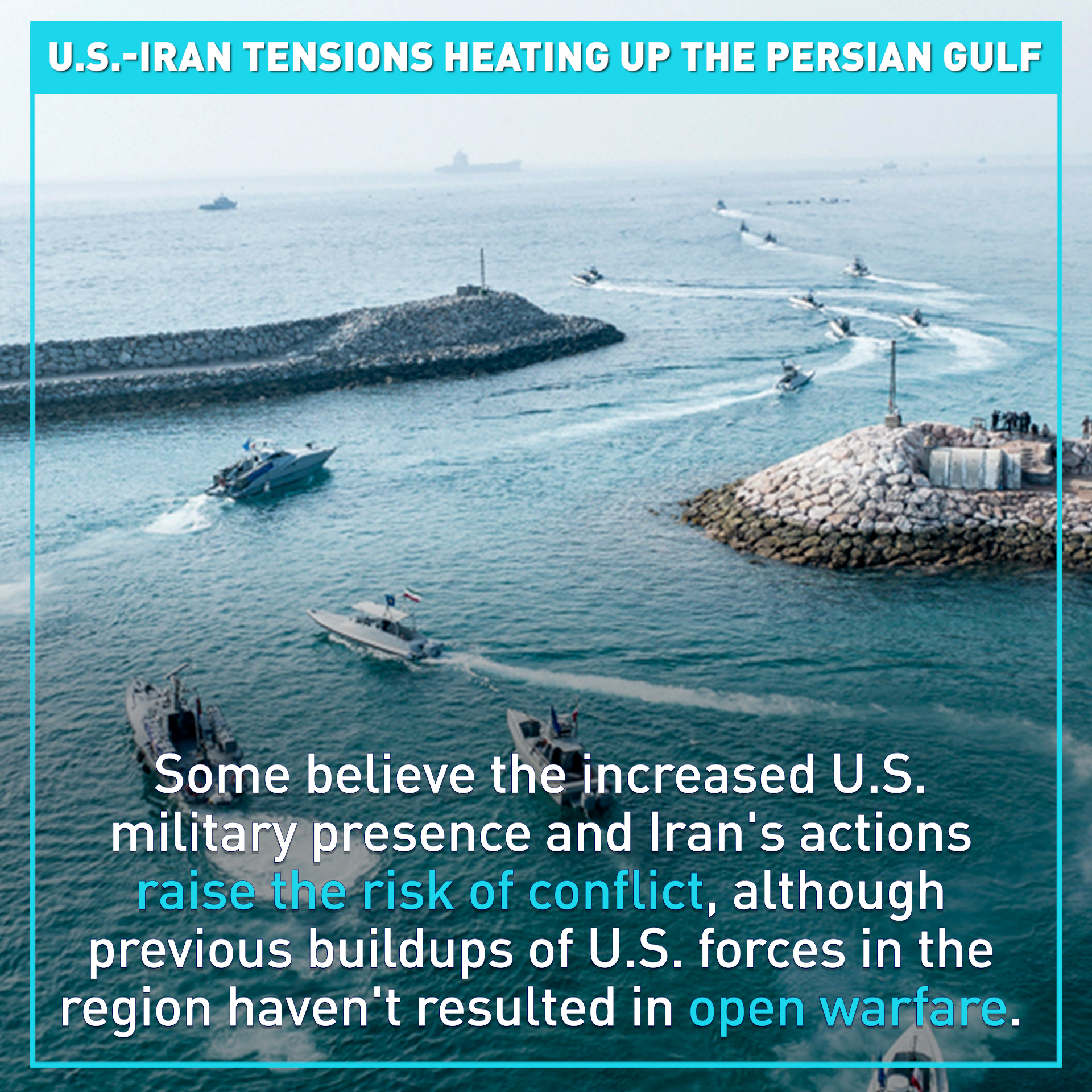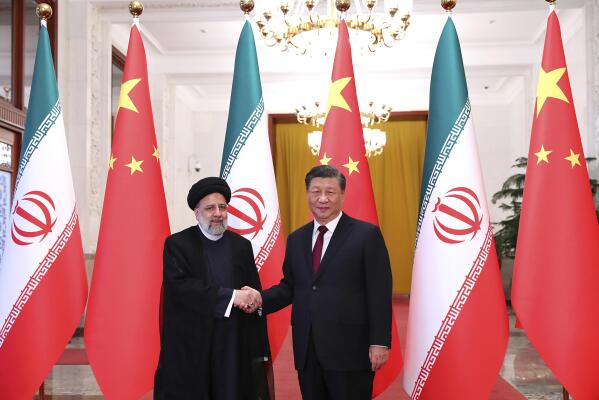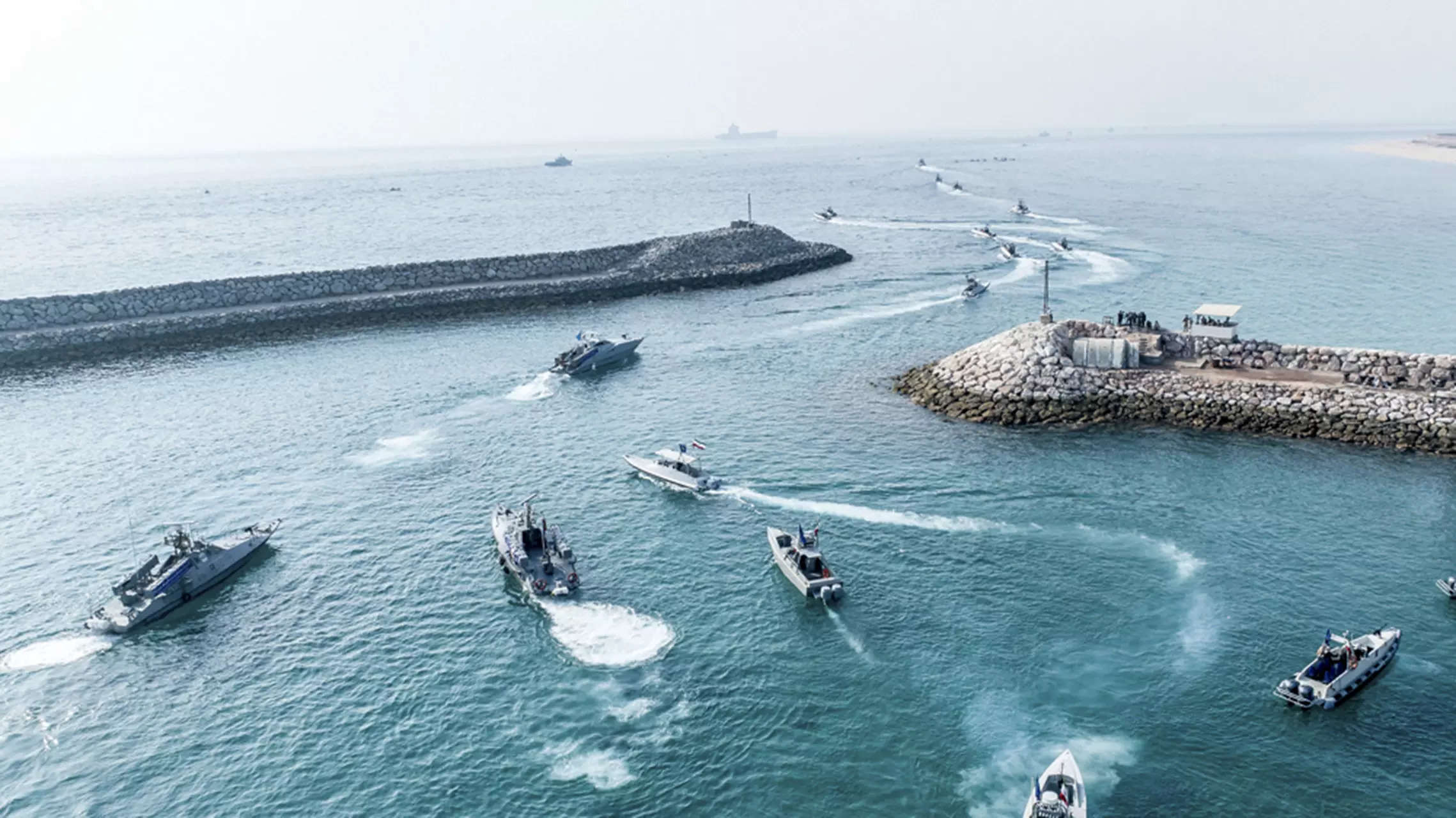US, Qatar In Agreement To Prevent Iran From Tapping Previously Frozen $6 Billion Fund; The Escalating Tension Between US-Iran In The Aftermath Of Israel Attack Has The Potential To Derail The Entire Middle East
For decades, Iran has remained a significant and complex challenge to the United States and its interests in the Middle East. The enduring struggle has involved nuclear concerns, support for terrorism, regional influence, and the wrongful detention of American citizens. Incidents of conflict have left a painful history, with casualties on both sides. Notably, diplomatic efforts to address these issues have encountered obstacles. In the aftermath of the Isreal Hamas conflict, the issue of Iran has cropped up again, potentially flaring up even more than before.

The US and Qatar have come to an agreement to safeguard a $6 billion fund that had recently been released as part of a prisoner exchange, with the aim of preventing Iran from accessing it.
Deputy Treasury Secretary Wally Adeyemo conveyed this information during a closed-door briefing with House Democrats, stating that the money would remain inaccessible for the foreseeable future.
This pact arises amidst the US’s investigation into Iran’s support for Hamas, the terrorist organization responsible for the recent attacks on Israel.
While the Biden administration has not found direct evidence of Iran’s involvement in the assault, it points to Iran’s long history of aiding Hamas as a form of complicity. Thus, in response, lawmakers from both sides of the political spectrum have urged the freezing of these funds in light of the violent conflict.
The $6 billion, primarily consisting of Iranian oil revenue, was unfrozen last month as part of a U.S.-Iranian prisoner exchange that secured the release of five American citizens; however, the funds were designated exclusively for humanitarian purposes and are under strict supervision by US authorities.

No Access To Funds
The White House reiterated that Iran has not accessed the humanitarian fund, stating that all the money remains securely held in a Qatari bank.
National Security Council spokesman John Kirby affirmed this, and, although he did not explicitly comment on the new agreement to prevent Iran’s access, he emphasized the close monitoring of the funds.
When pressed about whether Iran could access the funds if it wished, Kirby maintained that the money had not been accessed, and rigorous oversight was in place to control what could be accessed and for what purposes; however, he refrained from discussing potential policy changes that might imply Iran’s culpability.
During his visit to Israel, Secretary of State Antony Blinken stressed that the $6 billion fund could solely be used for humanitarian goods, medicine, and medical equipment and had not reached Iranian hands; he maintained the strict oversight of the funds, affirming the US’s authority to freeze them if necessary.

The US-Iran Conflict
US-based analysts warn that the ongoing military buildup of the United States in the Gulf poses a “dangerous” risk of confrontation with Iran.
Furthermore, there were reports last week about the US military contemplating the placement of armed personnel on commercial ships navigating through the strait, the primary entryway into the Gulf, which would be an unprecedented move.
Iran responded angrily to these reports, indicating its intent to equip its Revolutionary Guard navy with drones and missiles in response to the US actions.
Sina Toossi, a senior fellow at the Center for International Policy think tank in Washington, DC, argues that US President Joe Biden is essentially continuing the “failed policy” of economic warfare and escalation against Iran initiated by his predecessor, Donald Trump.
US-Iran relations have been deteriorating since 2018, when Trump withdrew from a multilateral nuclear deal in which Tehran had scaled back its nuclear program in exchange for the lifting of international sanctions on its economy.
Toossi warns that this policy pattern, stretching back decades, typically leads to mutual escalation, making it highly perilous.
The Question Of Ships
In recent months, the US has accused Iran of seizing several international ships traversing the Gulf.
Analysts point out that Iran’s recent behavior in these strategic waters followed Washington’s confiscation of an Iranian oil tanker as part of its sanctions enforcement efforts; the vessel is currently off the coast of Texas, and there are reports that American oil companies are reluctant to bid on the confiscated oil due to fears of Iranian retaliation against their ships in the Gulf.
Toossi cautions that both countries are engaged in a tit-for-tat cycle of retaliation, placing them on a dangerous “escalation ladder.”
Diplomatic prospects have continued to dim this year; upon taking office in early 2021, President Biden pledged to resurrect the Iran nuclear accord, formally known as the Joint Comprehensive Plan of Action (JCPOA).
However, despite several rounds of indirect negotiations aimed at restoring the pact, Washington continued to enforce sanctions against Tehran and imposed additional penalties.
Publicized JCPOA talks were eventually put on hold, and the situation became more complex with an Iranian crackdown on anti-government protesters and accusations of Tehran providing drones to Moscow for use in Ukraine.
Ryan Costello, policy director at the National Iranian American Council (NIAC) in Washington, DC, points out that the headlines about bolstering the US military presence in the Gulf evoke memories of the Trump era.

While the Biden administration contends that it seeks to deter Iranian interference with ships, Tehran might interpret the increased US military presence as an attempt to facilitate the seizure of Iranian tankers, creating a perilous mix of circumstances.
Iran has strongly rejected US military involvement in the Gulf, viewing it as hostile foreign interference. The Pentagon, however, maintains that its recent deployments align with a longstanding US policy aimed at collaborating with partners to “deter potential aggression and keep these shipping lanes open.”
Given the significant implications for the global energy market and economy, as much of the world’s oil flows through the Gulf, the situation warrants careful attention.
Recent tensions have arisen a few months after Iran and Saudi Arabia, a top US ally, agreed to restore relations in a Beijing-brokered deal welcomed by Washington.
Nevertheless, the Biden administration seeks to reaffirm its presence in the region, particularly concerning shipping lanes, as well as emphasize its commitment to regional stability for both allies and adversaries.
Imad Harb, director of research at the Arab Center in Washington DC, points out that beyond the shipping lanes issue, Washington aims to emphasise its dedication to the region, sending a message to allies and rivals alike.
This message also conveys US interest in Middle East developments, concerns about Iran’s activities, and its determination to maintain influence, if not hegemony, in the region.

Addressing Iran’s Evolving Threats to US Interests
For many decades, the United States has regarded the Islamic Republic as one of the most significant threats to its interests and allies in the Middle East.
Both Democratic and Republican presidents, spanning successive administrations, have pointed to Iran’s nuclear program, its support for terrorism, its involvement in Middle Eastern affairs, and its imprisonment of American citizens on questionable charges as sources of concern.
Since the 1980s, US military personnel stationed in various locations, including Iraq, Lebanon, Saudi Arabia, Syria, and Afghanistan, have been targeted by Iran’s proxies and allies.
Washington has alleged that hundreds of American lives have been lost in confrontations, suicide bombings, improvised explosive devices, and assassinations.
In response, Tehran has claimed that the United States has assassinated a high-ranking military commander, damaged or sunk warships, and downed a civilian passenger plane.
US forces have also taken military action against Iranian-backed groups in Iraq and Syria; Washington’s primary worries regarding Iran include:
- The development of increasingly accurate ballistic missiles with a range of up to 2,000 kilometers (1,250 miles).
- The supply of drones to Russia and millions of dollars in arms to militant proxies in Iraq, Lebanon, the Palestinian territories, Syria, and Yemen.
- Aggressive actions at sea, including the seizure of US drones and provocations against US naval forces in the Persian Gulf.
- Cyberattacks on US government entities, critical infrastructure, and private businesses.
- Plots to assassinate current and former US officials in retaliation for the 2020 killing of General Qassem Soleimani.

Like his three predecessors, President Joe Biden has consistently affirmed that Iran must not acquire a nuclear weapon, stating, “The only thing worse than the Iran that exists now is an Iran with nuclear weapons.”
He has also stressed that the use of force is a “last resort”; however, his diplomatic efforts to revive the landmark nuclear agreement, originally brokered between Iran and six major world powers in 2015 but abandoned by President Trump in 2018, have stalled after 17 months of talks initiated in April 2021.
President Biden faced increasing pressure, both domestically and internationally, to take more assertive measures to contain Iran’s nuclear program, as Tehran escalated uranium enrichment and advanced its centrifuge technology.
As of early 2023, Israeli estimates suggest that Iran would need up to a year or possibly two to construct a nuclear bomb and a missile warhead if it opted to cross the nuclear threshold.
However, in January, Lt. Gen. Aviv Kochavi, the retiring head of the Israeli Defense Forces, claimed that Iran already possessed enough enriched uranium to potentially fuel four nuclear weapons.
Furthermore, Iran presents a threat not only to US interests but also to the US homeland and its Middle Eastern partners.
FBI Director Christopher Wray emphasized Iran’s growing aggression and capability in nefarious activities during his testimony to the Senate Committee on Homeland Security and Governmental Affairs on November 17, 2022. Iran employs an expanding range of tactics to advance its interests and harm the United States.

US Israel Growing Proximity
Under President Biden, the United States and Israel have accelerated joint military exercises.
In January 2023, these heightened tensions were evident in the largest-ever U.S.-Israeli military exercise, conducted by land, sea, and air over four days.
The exercise involved over 6,400 American troops and more than 1,500 Israeli troops, engaging in long-range strikes, suppression of enemy air defense, electronic warfare, offensive countermeasures, air interdiction, and maritime operations. “Juniper Oak 23” also featured 42 Israeli aircraft and 100 US warplanes, including F-35 stealth fighters and B-52 bombers, along with a US carrier strike group and Special Operations Forces.
The scale of this exercise has relevance to various potential scenarios, and Iran may draw conclusions from it, according to a US official. The exercise also deployed two KC-46 air refueling tankers, which can support long-range bombing missions.
The current escalating tensions stand in stark contrast to the warm relations between the United States and Iran during the monarchy. During President Richard Nixon’s administration (1969-1974), the United States cultivated a close relationship with Mohammad Reza Shah Pahlavi.
Nixon and his successors, irrespective of political affiliation, regarded Iran as a primary protector of US interests in the region and a barrier against Soviet expansion.
In the 1970s, the United States supplied Iran with military equipment valued at billions of dollars; tens of thousands of US technicians were stationed in Iran to train local armed forces and maintain weaponry. The US Embassy in Tehran occupied a vast 27-acre compound.
However, relations soured after Iranian students seized the US Embassy and its 52 diplomats in 1979, leading to the breakdown of U.S.-Iranian relations in 1980.
The United States aligned with Iraq’s Saddam Hussein during the eight-year war with Iran, providing intelligence that assisted Iraqi forces in deploying chemical weapons against thousands of Iranians.
Since the mid-1980s, there have been sporadic diplomatic attempts by both Washington and Tehran, with varying levels of success. In the mid-1980s, the two countries engaged in a covert arms-for-hostages trade, the most controversial decision of the Reagan administration.
In 1997, President Mohammad Khatami called for both nations to “bring down the wall of mistrust,” and the Clinton administration lifted sanctions on Iranian carpets, pistachios, and caviar.
In 2013, President Barack Obama and President Hassan Rouhani initiated direct diplomacy that eventually led to the 2015 nuclear deal, involving five other major world powers.
President Trump withdrew from the agreement in 2018 and imposed more than 1,500 sanctions. The following statements from US officials highlight the threat posed by Iran since 2021.





